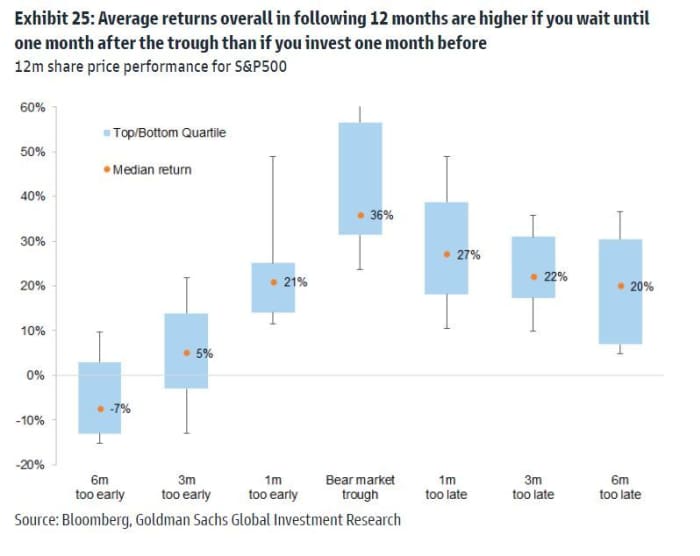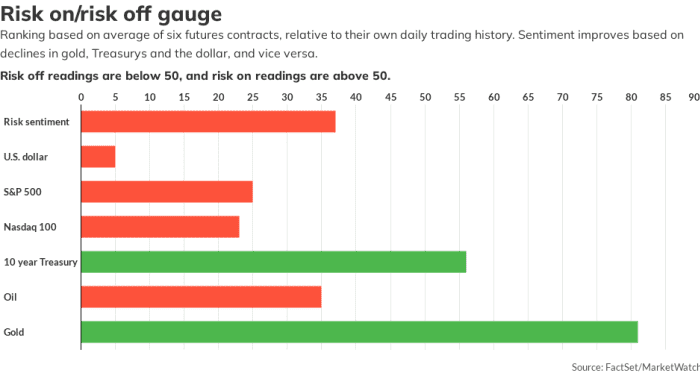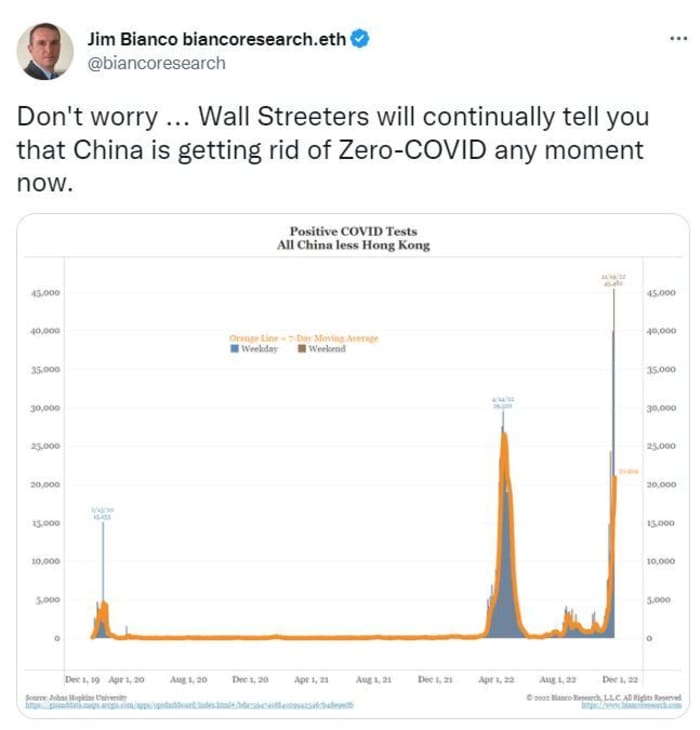In a shortened week that will bring both Thanksgiving and the World Cup kickoff, investors have all sorts of excuses to head to the sidelines. Those sticking around will be grinding through the traditional data dump on Wednesday and even an appearance by Fed Chairman Jerome Powell.
There’s more caution on our call of the day, where Goldman Sachs’s 2023 outlook predicts a “volatile” ride to the bottom of this bear market, before a more optimistic phase takes hold in 2023. And investors will need to time the latter just right.
“We expect markets to transition into a ‘Hope’ phase of the next bull market at some point in 2023, but from a lower level,” said a team led by Goldman’s chief global strategist Peter Oppenheimer, in a note to clients. “The initial rebound from the trough is likely to be strong, in common with the beginning of most cycles before transitioning into a ‘Post Modern Cycle’ with lower returns.”
But before investors can get to the hopeful phase, they must grind through the rest of this bear market that Oppenheimer and the team say has some ways to go.
They are concerned over recent fresh optimism over the possibility of slowing interest rate increases that has driven around a 5% gain in equities since June, even with real U.S. interest rates up 85 basis points and 10-year yields TMUBMUSD10Y, 3.806% more than 50 basis points higher since then.
“The recent rebound in equities is not the first we have seen in this bear market. In our view, the speed of the rise in interest rates (rather than their absolute level) has the potential to do more damage as investors are likely to increasingly focus on growth and earnings weakness,” said Oppenheimer and the team.
For that reason, they expect overall returns to be relatively low between now and the end of 2023, where they see the S&P 500 SPX, -0.39% finishing around 4,000. Right now, we’re stuck in a “cyclical” bear market that typically sees falls of around 30%, lasting for 26 months, with 50 months required for recovery, said the bank.
Through the balance of 2023, they do see conditions for a recovery starting to come together. And this suggests that from a lower level, prospects for transitioning into a “hope” phase of the next cycle will be strong. Pay close attention here, says Oppenheimer and co: “These recoveries typically start during recessions and are driven predominantly by valuation expansion and can be costly to miss.”

Goldman Sachs
Catching the “hope” phase just right is indeed tricky. Their above chart shows how average returns overall in the following 12 months are much higher if an investor waits one month until after the trough as opposed to investing a month before.
Also during that phase, initial recovery trends tend to be led by assets that have underperformed the most during the bear market phase. “This is what makes these transitions so difficult to navigate — the recovery when it comes tends to be swift and led by the types of companies that investors tend to avoid through the bear market.”
“That said, this is ‘the trade after the trade’ and we think it is premature to be positioning for this now” said Goldman, urging investors to hold their horses.
As for right now, strategists are all in on a “barbell approach,” which means investing across the risk spectrum with the goal of getting a more even portfolio. Their mix consists of quality, strong balance sheet and stable margin companies, with deep value, energy and resources where valuation risks remain limited.
“We like companies that can compound earnings and returns through a combination of reinvestment and dividends over time,” he said, adding that in contrast to the last cycle, they want more diversification across styles and regions and more emphasis on valuation, which should “enhance returns through 2023.”
Read: Is the stock-market rally running out of road? Watch this number.
The markets

MarketWatch
Best of the web
Tests link retailer Shein’s cotton to a region accused of forced labor
Ukraine plans to evacuate two cities as temperatures plunge
Iran is now arresting actors who remove headscarves in protest
Meet the migrant workers who made the World Cup possible
The chart
More on China and its COVID-19 battle:

The Climate science circus wants to cheer everyone up.
No beer at the games, but this English fan in Qatar ended up at a palace:
Budweiser, meanwhile, has found a new purpose for all that undrunk World Cup beer:
Need to Know starts early and is updated until the opening bell, but sign up here to get it delivered once to your email box. The emailed version will be sent out at about 7:30 a.m. Eastern.
Listen to the Best New Ideas in Money podcast with MarketWatch reporter Charles Passy and economist Stephanie Kelton
